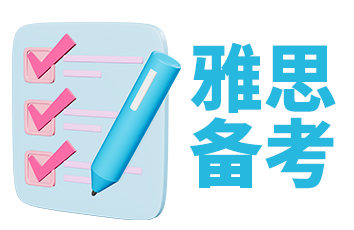2024年11月雅思考试纸笔共有4个场次,分别是11月2日、11月16日、11月23日、11月30日。下文羊驼小编整理了11月雅思考试阅读第三篇文章预测题目/题型以及答案(reading passage 3),供考生们复习参考。

READING PASSAGE 3
You should spend about 20 minutes on Questions 27-40 which are based on Reading Passage 3 below.
US Shale Gas Fracking
Paragraph A
We have had widespread drilling for oil and gas deposits for more than 100 years in the United States. Until the 1990’s, most of this recovery has occurred from conventional wells that were drilled down to rock formations, from which hydrocarbons could be pumped to the surface. The discovery of hydraulic fracking in the late 1940’s has long allowed companies to extract gas and oil from shale, but the perfection of these two techniques over the past few decades has allowed the process to become cost effective. There are numerous shale plays in the United States from which shale gas can be extracted, and firms are busy drilling wells in many areas of the country.
Paragraph B
Shale gas is natural methane in rock formations deep underground that, before fracking, was not feasible to extract. Its removal today depends on hydraulic fracturing and horizontal drilling. Hydraulic fracturing is the use of pressure to force liquids containing proppants (often sand) into rock strata, so that hydrocarbons are available for extraction. Current technology uses water, sand, and miscellaneous fluids, all of which must be imported to the well site. A wellbore is drilled, and then the fracturing fluid is forced through holes in the casing into the plays. High pressures are used to create fissures where the proppants are deposited to hold fissures open, so that hydrocarbons can be released. Hydraulic fracturing occurs in a number of stages and the fracturing fluid is forced into a small portion of the wellbore at each stage. After the hydraulic fracturing is completed, some of the fracturing fluid comes back up the well. Because the flowback and wastewater from a well can be toxic, it must be disposed of in a manner that does not create any health, safety, or environmental problems. The underground areas from which the gas is extracted may be left with cavities, which in turn can sometimes cause ground subsidence.
Paragraph C
The development of American shale gas deposits has been accompanied by notable benefits and a significant impact on the American economy. Next year, it is estimated that the development of America’s shale gas resources will employ 869,000 people. The shale gas industry will have capital expenditures of $48 billion and pay more than $28 billion in federal and state taxes this year. Due to shale gas, the US is using less coal and the country’s electricity costs have been lowered by about ten per cent. Shale gas has also contributed to a decrease in imports of foreign natural gas.
Paragraph D
Yet not everything is positive. The development of shale gas resources is associated with its toxic pollutants and environmental problems. It needs to be mentioned that the American federal and state governments were not prepared for the problems that accompany shale gas development. A lack of sufficient regulatory oversight in the US when the industry began allowed some unfortunate situations and instances of damage that could have been prevented.
Paragraph E
Sites where wells are drilled for extracting shale gas often cover about two hectares and involve increased traffic, noise, light, dangerous equipment, and toxic chemicals. The activities and conditions at a site therefore create a potential for contamination and environmental degradation. The major risk involves damage from the toxic chemicals used in hydraulic fracturing. The fracking fluid is approximately 99.5 per cent water and sand and 0.5 per cent additives used to enhance hydrocarbon recovery. An average of 5000 gallons of chemical additives may be used to frack a well and some of them are toxic. Since different chemicals and different amounts are used at each well, the toxicities may vary.
Paragraph F
Under US federal law, the chemicals used at a well are exempted from full reporting requirements. Under most state laws, the supplier or the service company of a fracturing operation must disclose information, unless the chemicals are claimed as a trade secret. Recently, it was estimated that in approximately two-thirds of the cases the complete chemical compositions were not reported. Chemical secrecy is a problem, because persons working at wells and persons who come into contact with chemicals used at a well do not have sufficient information to know whether they need medical attention. Without timely information of the chemicals involved in a spill or release, first responders to emergencies, health professionals, and property owners may lack key information for deciding what actions they should take.
Paragraph G
Issues are also being raised about the need for better management practices to reduce the risks that accompany shale gas development. Hundreds of best management practices have been identified to employ during energy development and extraction, but most of these are currently voluntary. In the absence of mandatory management practices covering all of the stages of shale gas development, there are not sufficient assurances that people and the environment are adequately protected against health and safety problems. By adopting more mandatory management practices, the industry may be able to reduce the risks and shale gas development would be beneficial overall.
Paragraph H
The American experiences can be helpful in discerning whether other countries might proceed with shale gas development. The activities connected with developing shale gas can be assessed to learn about the risks, dangers, and problems that need to be addressed. Then, existing laws and regulations can be evaluated to determine their probable success in addressing the risks. Additional regulations can be developed if they are needed and firms can be required to adopt best management practices. Governments can require disclosure of dangerous materials and establish funding mechanisms to pay for regulatory oversight and for collecting monies to be used to remedy future damages caused by fracking.
Glossary
Shale play – An underground formation of a type of rock containing natural gas.
Proppant – A solid material used in fracking to keep holes open during the fracking process.
Questions 27-34
The text above has 8 paragraphs A-H.
Which paragraph contains the following information?
Write your answers in boxes 27-34 on your answer sheet.
27 Not all chemicals used for fracking are poisonous.
28 Shale gas is found deep under the ground.
29 At present, recommended management practices for fracking companies are not compulsory.
30 The US government did not initially enforce enough control on the fracking industry.
31 Fracking techniques have been available since the 1940’s.
32 Finance should be set aside to pay for future problems that fracking might create.
33 Some companies do not publicise the chemicals that they use for fracking.
34 Using shale gas has reduced US expenditure on electricity generation.
Questions 35-39
Choose FIVE letters, A-I.
Which of the following sentences below accurately describe the disadvantages to the US shale gas fracking industry?
Write the correct letter, A-I, in any order in boxes 35-39 on your answer sheet.
A Toxic liquid can flow up a drilling installation and potentially create pollution.
B Underground gas explosions can be a risk to local communities.
C The ground over the fracking areas can sometimes become unsafe.
D Oil deposits can sometimes be lost during gas fracking.
E Fracking installations generate additional traffic pollution.
F Excess light can be present at fracking installations.
G Sand used in fracking can pollute the water table.
H Workers contaminated during fracking operations can have correct treatment delayed.
I Tax dollars are taken out of the country by overseas extraction companies.
Question 40
Choose the correct letter, A, B, C or D.
Write the correct letter in box 40 on your answer sheet.
40 What is the writer’s purpose in Reading Passage 3?
A To analyse the government’s role in US fracking.
B To criticise US fracking techniques.
C To compare US and European fracking methods.
D To provide an overview of the benefits and risks of US fracking.
11月阅读预测题参考答案:
27. E 28. B 29. G 30. D 31. A 32. H 33. F 34. C 35. A 36. C 37. E 38. F 39. H 40. D




